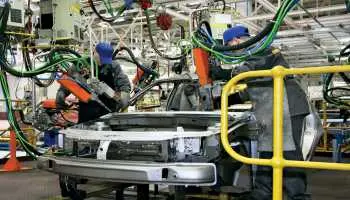
Asia-Pacific Thermoplastic Elastomer Market Share, Trends, Revenue, Key Players, Growth Drivers, Challenges and Future Investment Opportunities Till 2033: SPER Market Research
Category :
Chemical & Materials
Published: Dec-2024
Author: SPER Analysis Team
Asia-Pacific Thermoplastic Elastomer Market Share, Trends, Revenue, Key Players, Growth Drivers, Challenges and Future Investment Opportunities Till 2033: SPER Market Research
Asia-Pacific Thermoplastic Elastomer Market is projected to be worth USD 20.45 billion by 2033 and is anticipated to surge at a CAGR of 8.85%.
Thermoplastic elastomers (TPEs) are polymers that combine the properties of rubber and plastic. TPEs are ideal for applications needing both flexibility and durability because, like rubber, they are elastic, flexible, and able to stretch without losing their shape. Unlike traditional rubber, TPEs have thermoplastic characteristics, which allows them to melt and change shape when heated, simplifying production and processing. TPEs' flexibility and plastic-like manufacture make them popular in a wide range of industries, including consumer electronics, household goods, medical devices, and automobile parts.
Asia-Pacific Thermoplastic Elastomer Market Driving Factors and Challenges
Drivers: Technological developments in manufacturing are also driving market expansion. TPE quality and production efficiency have increased thanks to new processing methods including extrusion and injection molding. This has made it possible for producers to keep manufacturing costs under control and better match high-performance products to the growing demand. Furthermore, sustainable bio-based TPEs meet sustainability objectives by utilizing renewable resources. The expanding electronics and electrical sector in Asia Pacific is another important driver. The market for consumer electronics is expanding because to factors like increased disposable income, technical developments, and materials with better electrical insulation, flexibility, and heat resistance—all of which TPEs offer. The demand for TPEs is also expected to be driven by the growth of the medical industry, which is being driven by rising healthcare costs and improvements in medical device technologies.
Request For Free Sample Report @ https://www.sperresearch.com/report-store/asia-pacific-thermoplastic-elastomer-market.aspx?sample=1
Challenges: There are a number of obstacles preventing the Asia-Pacific thermoplastic elastomer (TPE) market from expanding. Since TPEs are made from both petroleum-based and bio-based ingredients, volatile raw material prices are one of the main obstacles. The cost of production and, thus, the overall cost of TPE goods are significantly impacted by changes in the price of oil. Another difficulty is the dependence on intricate supply networks, which can be upset by events like natural catastrophes, international pandemics, or geopolitical unrest, as was the case with the COVID-19 pandemic. Further impeding wider use are the high production costs of biodegradable TPE versions and the absence of recycling infrastructure, even in the face of the growing demand for sustainable and environmentally friendly products.
Impact of COVID-19 on Asia-Pacific Thermoplastic Elastomer Market
The Asia-Pacific Thermoplastic Elastomer (TPE) market was significantly impacted by the COVID-19 pandemic, which resulted in demand changes and disruptions. Initially, supply chains were negatively impacted by transit limitations and industry closures, particularly in major production hubs like China. This resulted in a delay in the availability of raw materials and the delivery of finished goods. The demand for TPEs from important customers, such as the consumer electronics, construction, and automotive sectors, also declined as a result of factory closures, economic slowdowns, and a drop in consumer expenditure. Nonetheless, the healthcare sector experienced a rise in demand for TPEs since they are used in medical equipment like as tubing, seals, and personal protective equipment (PPE) including masks and gloves, all of which saw a surge in demand during the pandemic.
Asia-Pacific Thermoplastic Elastomer Market Key Players:
The market study provides market data by competitive landscape, revenue analysis, market segments and detailed analysis of key market players are; Arkema S.A., Avient Corporation, BASF SE, Bayer MaterialScience LLC, China Petroleum & Chemical Corporation, Huntsman Corporation, Kraton Polymers LLC, LG Chem, LyondellBasell Industries N.V., Nippon Polyurethane Industry Co. Ltd, Teknor Apex, Others.
For More Information about this Report @ https://www.sperresearch.com/report-store/asia-pacific-thermoplastic-elastomer-market.aspx
Asia-Pacific Thermoplastic Elastomer Market Segmentation:
By Material: Based on the Material, Asia-Pacific Thermoplastic Elastomer Market is segmented as; Poly Styrenes, Poly Olefins, Poly Ether Imides, Poly Urethanes, Poly Esters, Poly Amides.
By Application: Based on the Application, Asia-Pacific Thermoplastic Elastomer Market is segmented as; Automotive, Electrical & Electronics, Industrial, Medical, Consumer Goods, Others.
By Region: This research also includes data for Australia, China, India, Japan, South Korea, Rest of Asia-Pacific.
This study also encompasses various drivers and restraining factors of this market for the forecast period. Various growth opportunities are also discussed in the report.
Would you like to view the sample pages?
Get Sample PagesExplore Related Reports
Domains Served
Our Global Clients
Our data-driven insights have influenced the strategy of 200+ reputed companies across the globe.




































